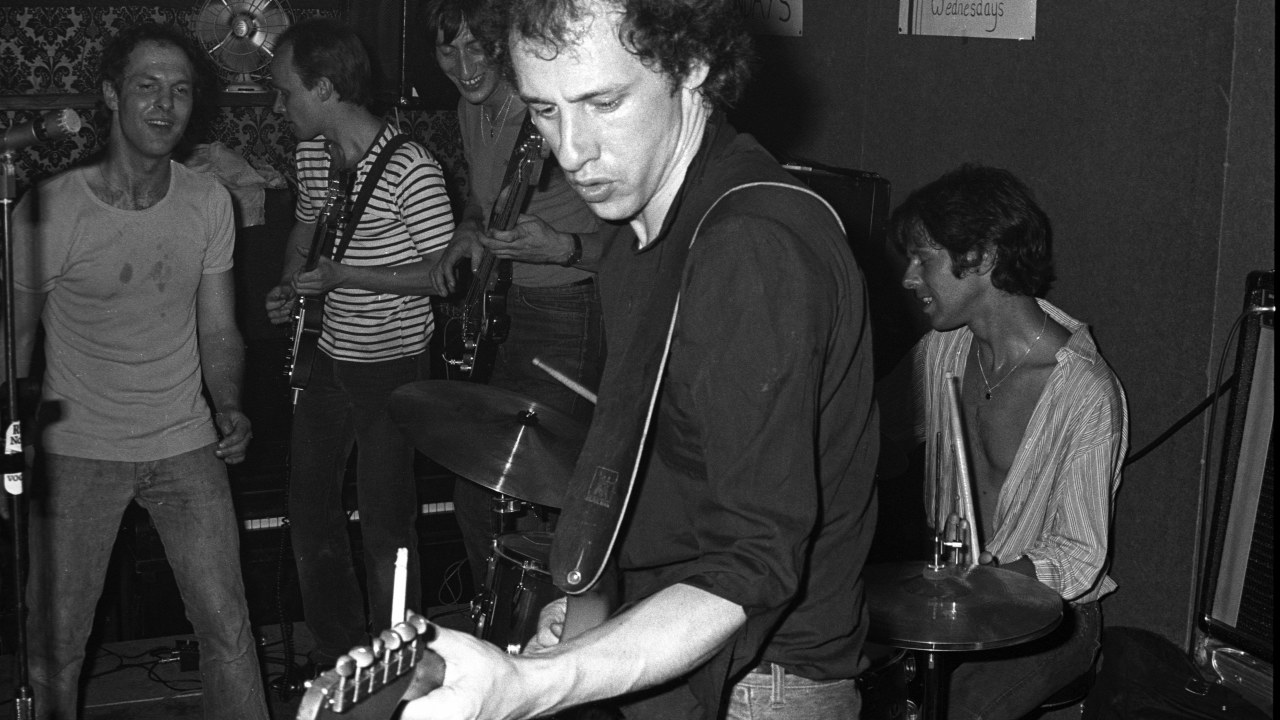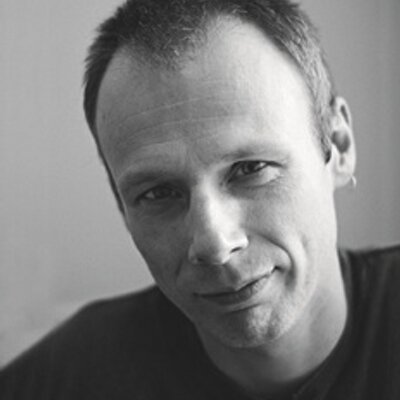At 10.10pm on October 9, 1992, Mark Knopfler bid goodnight to 40,000 people and walked off stage in Zaragoza, Spain. It was the last time he did so as the singer, guitarist and undisputed leader of Dire Straits. It brought to an end a 15-year journey during which time the band had risen from the pubs and sweaty clubs of London to the very biggest stages in the world.
The simple facts are these: Knopfler formed Dire Straits in London in 1977 with his younger brother David on rhythm guitar, John Illsley on bass and Pick Withers on drums. Emerging from the city’s fertile pub-rock scene at the dawn of the punk era, they were an overnight sensation. The white-hot success of their first single, Sultans Of Swing, and self-titled debut album was founded on the elder Knopfler’s fluid, finger-picked guitar style, which sounded as lovely as a bubbling stream. Theirs was no fleeting moment, either, with three more hit records following before they reached their apogee on their fifth studio album, Brothers In Arms.
That record was unstoppable from the moment of its release in May 1985. It made Dire Straits superstars, but it also warped the popular perception of both Knopfler and his band. Dire Straits became a byword for a certain sort of safe, homogenised music, and Knopfler was turned into a caricature of the middle-aged rocker, with jacket sleeves rolled up and wearing a headband.
What was forgotten in the wake of its stellar success was just how striking and sometimes radical Dire Straits had seemed from their inception. The bare-boned economy of Knopfler’s songs and his dizzying guitar fills were a breath of clean air amid the lumbering rock dinosaurs and one-dimensional punk thrashers of the late 70s. He was peerless as craftsman and virtuoso, able to plug into rock’s classic lineage and bend it to sometimes wild forms. He wrote terrific songs, too: from Sultans Of Swing to Romeo And Juliet, Tunnel Of Love to Private Investigations. These were taut mini-dramas of dark depths and dazzling melodic and lyrical flourishes. In quick time Knopfler was fêted by the rock aristocracy. Bob Dylan invited him to be his band leader and producer, and a parade of other icons also beat a path to Knopfler’s door, among them Phil Lynott, Eric Clapton, Van Morrison and Tina Turner.
It would be hard to conjure a less likely rock star than Knopfler. Balding and outwardly taciturn, he seemed born to the role of sideman. Yet his formidable talent was yoked to an iron will. He drove Dire Straits on, expanding their boundaries right up to the point Brothers In Arms became too all-consuming to contain. It wasn’t even as if he had contrived to make a blockbuster. In large part it was hushed and melancholy, a sigh rather than a roar. But it was damned by having its signature single explode out of context. At its core, Money For Nothing was an old-school boogie, but a dash of studio polish, Sting’s mannered backing vocal and a computer-generated promo video were enough to turn it, and Dire Straits themselves, into the very embodiment of 80s naff.
Small wonder that Knopfler once told Rolling Stone: “Success I adore. It means I can buy 1959 Gibson Les Pauls and Triumph motorcycles. But I detest fame. It interferes with what you do and has no redeeming features at all.”
Mark Knopfler was born into a middle-class household in Glasgow in 1949. His brother and future Dire Straits bandmate David followed three years later. Their father was an architect expelled from his native Hungary on account of his firebrand socialism. When the family moved to Newcastle in the 50s their English mother became a headmistress, and both boys attended a local grammar school in Gosforth.
Music was a fact of life in the Knopfler house. The brothers latched on to Elvis Presley, Chuck Berry and, later, The Shadows. Hearing the latter, and in particular their bespectacled lead guitarist Hank Marvin, opened up a future filled with possibilities for Mark Knopfler. He traced the arc of Marvin’s distinctive sound back to American wizards like Chet Atkins, Elvis’s guitar slingers Scotty Moore and James Burton, and blues greats such as Muddy Waters, John Lee Hooker and Howlin’ Wolf. At 15 he persuaded his father to buy him his first guitar, a £50 copy of Marvin’s red Stratocaster. Soon he’d taught himself the basics and was playing in school bands and on the city’s club circuit. Brother David followed suit, performing at working men’s clubs in a folk duo.
“On one hand our parents were horrified that we wanted to make a career of pop music,” David Knopfler says now. “On the other they had a liberal bias for letting us follow our own path. But they would have preferred us to be architects or lawyers, not ‘My son the unemployed strummer’.”
Mark was first to flee the nest, when he got a job as a cub reporter on the Yorkshire Evening Post in Leeds. One of his first tasks for the paper was to write Jimi Hendrix’s obituary in September 1970, handed to him on account of him being the only person in the office young enough to know who Hendrix was. Another was to interview a local blues guitarist, Steve Phillips. The two of them hit it off and began performing together as an acoustic duo called Duolian Stringpickers, and spent the next few years playing gigs in the north-east.
“Mark was already a very capable guitarist at eighteen or nineteen, way above the norm,” notes Steve Phillips. “But he hadn’t developed his own style. He was far more withdrawn then as well. He didn’t have the confidence he acquired later as a musician, and didn’t see himself as a singer at all. His idea was that he would be the guitar player behind somebody else.”
During that time Knopfler left the paper to take a degree in English at Leeds University, and married his school sweetheart, Kathy White. As soon as he graduated in 1973 Knopfler headed for London. He answered a classified ad in the Melody Maker to join jobbing pub-rock band Brewers Droop. The group had a record deal with RCA but were in the process of falling apart. Two months later Knopfler was out of a job, destitute and newly divorced, the move to London having brought about the end of his marriage. He returned to Newcastle. Later he took a post as an English lecturer at Loughton College in Essex, and put together his own pub-rock band, the Café Racers.
The teaching job gave Knopfler a lifeline and disposable income. He bought a motorbike and his dad’s car, allowing him to transport his growing collection of guitars from one pub gig to the next. In 1976 he struck out on his own on a trip to America, travelling the country on a Greyhound bus and starting work on what would become Dire Straits’ first set of songs.
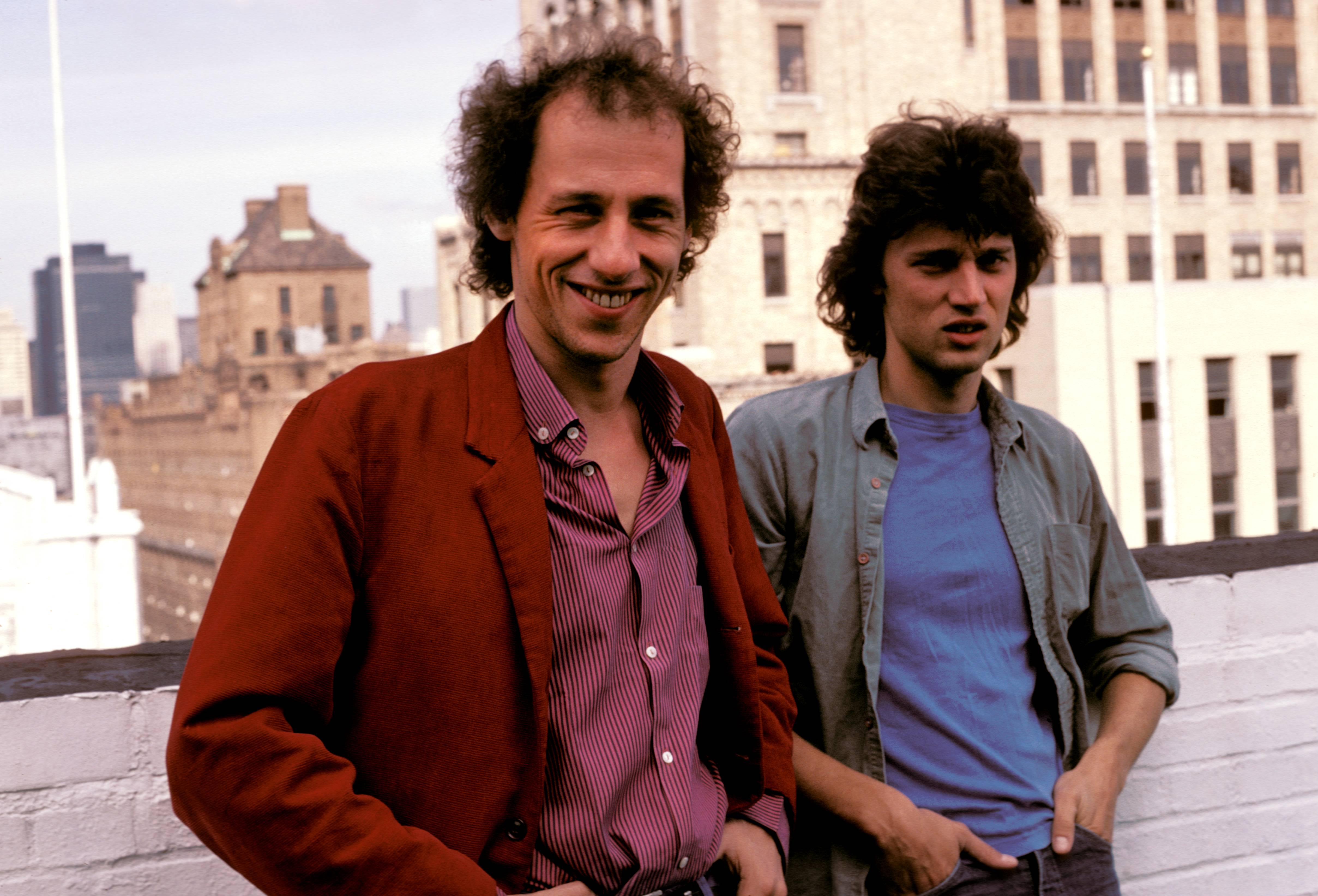
At the same time, David Knopfler moved to London to work as a social worker in Deptford, a down-at-heel neighbourhood south of the Thames. He moved into a council flat shared with 26-year-old John Illsley, a bass player who’d grown up in rural Leicestershire and was then studying sociology at nearby Goldsmith’s College. The senior Knopfler became a regular visitor to the flat, bringing along his guitar for jamming sessions that took off after last orders at the pub.
“We got along well from the start,” Illsley recounts now. “I did a couple of gigs with Mark’s band because the bass player’s girlfriend was having a baby. After that we were sat in the pub one night and decided to start our own band. There was always a strong consensus between Mark and me about how things should be. We rarely disagreed about anything.”
Knopfler introduced his brother and Illsley to Pick Withers, a propulsive drummer he’d first met while doing an aborted session with Rod Clements of Lindisfarne. The four of them began rehearsing together in the poky flat, padding the walls and trusting to the benevolence of the neighbours.
“We didn’t talk about it, we just got on with it and it evolved,” says David Knopfler (below, with Mark). “But then I think both Mark and I had a different vision of what we were up to. I was building a democracy, and Mark was making an autocracy.”
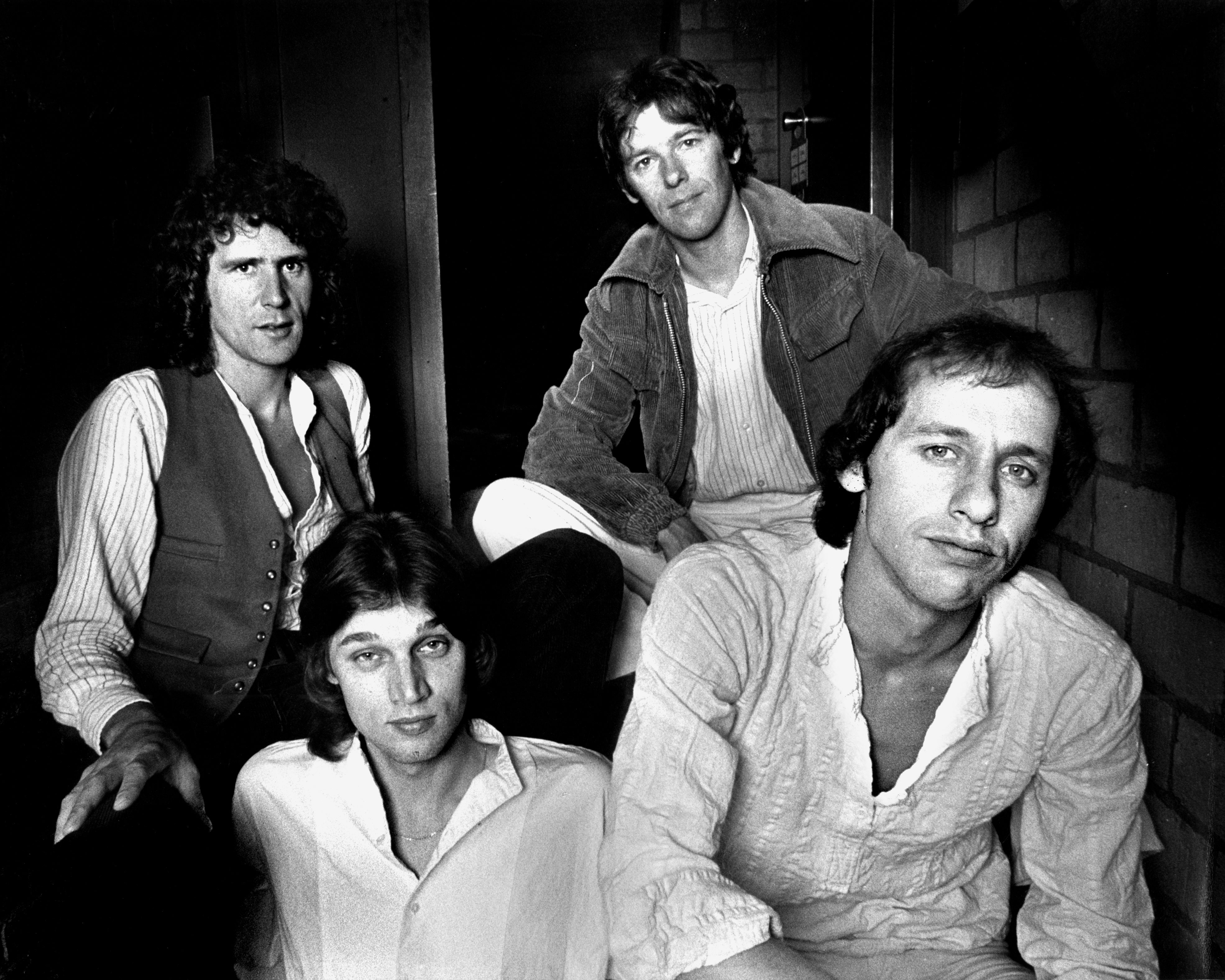
It was Pick Withers, the only member of the fledgling band without a day job, who suggested the name Dire Straits. The newly christened four-piece played their first gig together in the summer of 1977. It was at a makeshift festival that took place on a patch of grass out the back of the Deptford council block, and they ran a power cable from their flat to the small stage. Illsley recalls sharing the bill that afternoon with a bunch of snarling punk bands, though in fact it was the more approachable Squeeze who headlined.
Using £500 Illsley had inherited from his grandmother, the band cut a demo at the tiny Pathway Studios in north London. Among the five Mark Knopfler originals on the tape were Sultans Of Swing, a loose-limbed account of watching a hapless jazz combo flailing in a London pub, and a languorous shuffle titled Down To The Waterline. Lyrically evocative, beautifully played and sung by Knopfler in a laconic drawl, the tracks sounded fresh and different. DJ and rock historian Charlie Gillett got hold of the tape and began airing it, alerting Phonogram Records A&R man John Stainze, a rockabilly buff who snapped the band up to the major label.
Stainze reached out to a booking agent contact of his, Ed Bicknell, inviting him along to see his new band playing at the Dingwalls club in Camden. Bicknell had taken his first steps into the music business at Hull University in the 60s, where as social secretary he booked gigs by the likes of Led Zeppelin, The Who and Pink Floyd before joining the prestigious NEMS agency that handled such heavyweight clients as Deep Purple, Black Sabbath and Elton John. Fortuitously, Bicknell too had had his road-to-Damascus moment with music through The Shadows.
“I listened to two songs that night and turned to John and said: ‘He’s got a red Stratocaster like Hank Marvin’s. Who’s managing this group?’” Bicknell recalls. “If Mark would have had a blue Gibson I’d have walked out, but he encapsulated everything that was my dream. I remember I was wearing a long suede coat with a nylon fur collar that night. When I went into the dressing room to meet the band, the hem of the coat caught the red Stratocaster and knocked it off its stand to the floor. That went down like a lead balloon.”
Bicknell cemented his credentials by booking the band onto a 23-date UK tour with Talking Heads in December 1977. By the end of it he was their manager and within two months Dire Straits were recording their first album at Island Records’ Basing Street studios with producer Muff Winwood, elder brother of Stevie and former bassist with the Spencer Davies Group.
“Or Spluff Windbag, as we called him,” says Bicknell, laughing. “He pretty much recorded a live record but without the audience. It cost £12,500, including the sleeve, and it sold eight million within nine months of coming out. We were reeling: ‘Fuck me. What’s happening?’”
The Dire Straits album was released in October 1978. At a point when such second-generation punk and new-wave acts as The Jam, Boomtown Rats and Generation X were making an impression, it stood apart. Knopfler’s songs were characterised by the intricacies of his guitar playing, the rolling gait of the band’s rhythms and by their open spaces, as uncluttered as prairie lands. It was a rich musical terrain that drew comparisons with Dylan, JJ Cale and Ry Cooder. But in spirit it was closest to another great record released that year, Bruce Springsteen’s symphony to the working man, Darkness On The Edge Of Town. Like that record it had the same connection to time and place. In Dire Straits’ case this was to the back streets of Newcastle and the bright lights of London, with Knopfler narrating his journey from one city to the other.
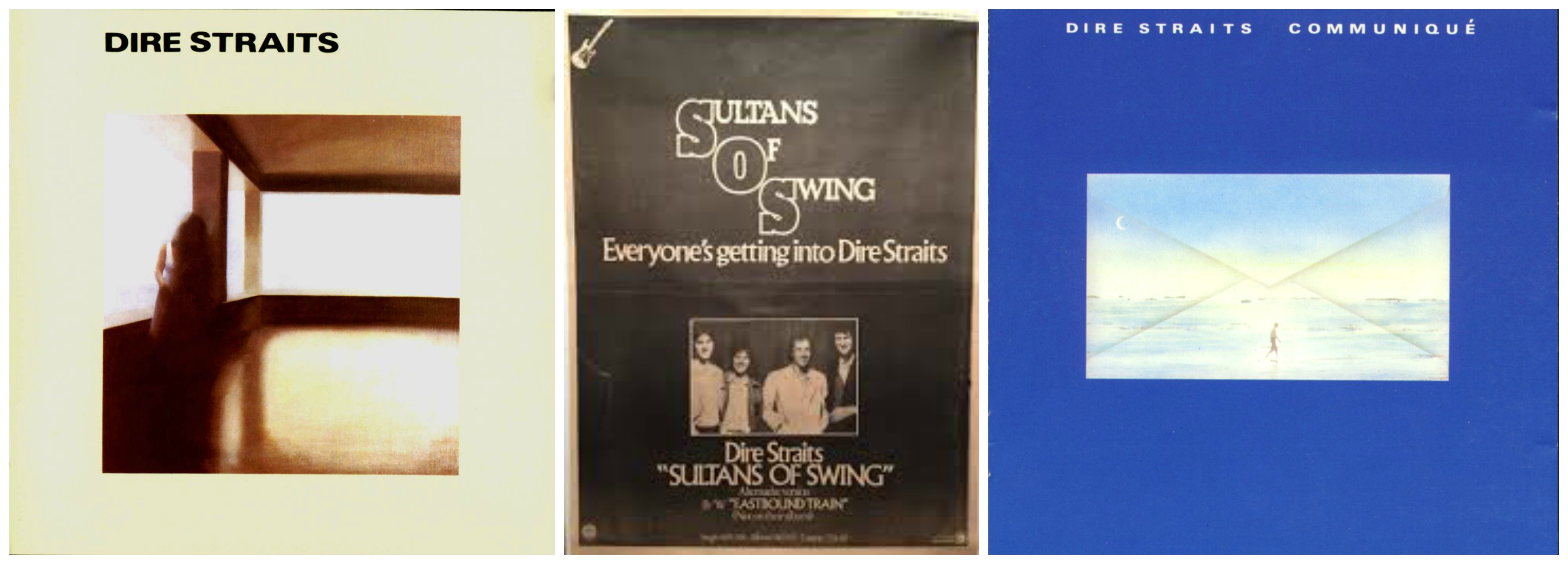
It was a success from the off, going Top 10 all across Europe. When it was released in America six months later it vaulted to No.2 on the Billboard chart. The band drove themselves around the States on their first tour of the country at the start of 1979. Dylan came to see their show in LA, popping backstage afterwards to ask Knopfler to play on his next album, Slow Train Coming. Knopfler, who had seen Dylan at Newcastle City Hall on his first electric tour in 1966, would later recall hiring an open-top convertible and driving down Santa Monica Boulevard to the session, getting sunburnt on route and thinking to himself: “This is it.”
“Mark was our standard bearer and ticket to being exceptional rather than merely good,” acknowledges David Knopfler. “He was actually rather humble at that point – hard for me to imagine now. John Illsley and I pretty much dragged him to the altar all the way.”
Before they even got to America, the band’s UK record company hurried them for a follow-up record, winging them out to the Bahamas to make Communique with producer and impresario Jerry Wexler, the man who had signed Led Zeppelin and recorded Ray Charles. Wexler smoothed the rougher edges of their sound. The album was rushed out less than a year after their debut, to a cooler response and slower sales. In retrospect it sounds like a logical step forward: Wexler’s sheen bringing Knopfler’s textured melodies into sharper focus, heard to best effect on Once Upon A Time In The West and the quick-stepping Lady Writer, each as coolly embracing as a Bahamian sunset.
As their whirlwind schedule intensified, the first strains began to show. Tensions within the band were brewing, intensified by the claustrophobia engendered by being constantly on the road or in the studio, and arising most damagingly between the two brothers.
“Everything put a strain on us,” says David Knopfler. “It was just through being exhausted: drinking too much every night, partying and wrecking your physical and mental health in the way that rock bands did then to excess.”
“Nobody involved is prepared for success like that,” adds Bicknell. “Everything changes, of course, but you stay the same. You’re probably still in your horrible little flat eating bacon sandwiches because none of the money has flowed through. Or if it has, you’re so terrified of it that you don’t spend anything, which is what happened with us. You think the tax man is going to take it away or that this is going to stop tomorrow.”
Bicknell suggests that the tension between the Knopflers ran deeper than Dire Straits. “David’s problem was he thought that the band should be a democracy, and it was more like a brutal dictatorship – as far as he was concerned. The issues between him and Mark, which for public consumption have been packaged up as musical issues, they weren’t. As John Illsley said to me at the time: ‘This has been going on since David was born.’ I’m stating the obvious, but David was in the group because he was Mark’s brother, not because he was the greatest rhythm guitarist that Mark could have found.”
John Illsley and I meet at a coffee shop in Notting Hill on a bright spring morning. The moment he walks through the door, Dire Straits’ 1980 hit Romeo And Juliet begins playing on the radio. Illsley smiles at the coincidence and suggests – entirely accurately – that the 35-year-old song sounds as if it had been made just yesterday.
At the time of its release it represented a crossing of the Rubicon for Mark Knopfler as a songwriter and for the band in general. Knopfler always was a prolific writer, but as he approached Dire Straits’ third album he had new horizons in mind. He envisioned the band’s sound being enhanced by keyboards, and of this freeing him to explore more complex terrain. Romeo And Juliet was the first signpost to his intentions: a near six-minute roller-coaster ride rumbling through the wreckage of a shattered love affair.
“I remember him coming into the office and playing it to me for the first time,” says Ed Bicknell. “I didn’t know what to say: I just sat and stared at the ground in complete disbelief. By then Mark had cottoned on that this was his group and he edged himself into pole position.”
The act of Knopfler conclusively seizing control would have been provocative enough, but it was exacerbated by other issues bubbling to the surface as the band gathered in New York to record their third album, Making Movies. According to Bicknell, three years of constant work had left them in a parlous state. It transpired that Romeo And Juliet was drawn from very personal experience.
“There were issues with various band members that related mostly to the girls in their lives and were calamitous,” says Bicknell. “We went into that record off the back of three out of four of them going through break-ups. Certain people also didn’t like certain people. It got very fractious. I thought the band was about to break up.”
To begin with, nothing was helped by them being in the studio with producer Jimmy Iovine. A brash New Yorker just off the back of making hit records with Bruce Springsteen and Tom Petty, Iovine had a painstaking way of working; the first week of recording was spent attempting to get the perfect drum sound. In this hothouse atmosphere the Knopflers were soon at each other’s throats.
“Before we started recording, Jimmy took Mark to watch a Springsteen session and his jaw was on the floor,” says David Knopfler. “Everyone was calling Springsteen ‘Boss’ and he completely called the shots. But Bruce had spent thirty years learning to be boss and he’s very good at it. Mark had not long come from being a college lecturer and hadn’t been schooled in people skills.
By that point the Knopflers’ relationship was as bad as it could be. “By the time of Making Movies he was king,” recalls David. “But he was the bloke I’d shared a bedroom with. How could I be deferential to him?”
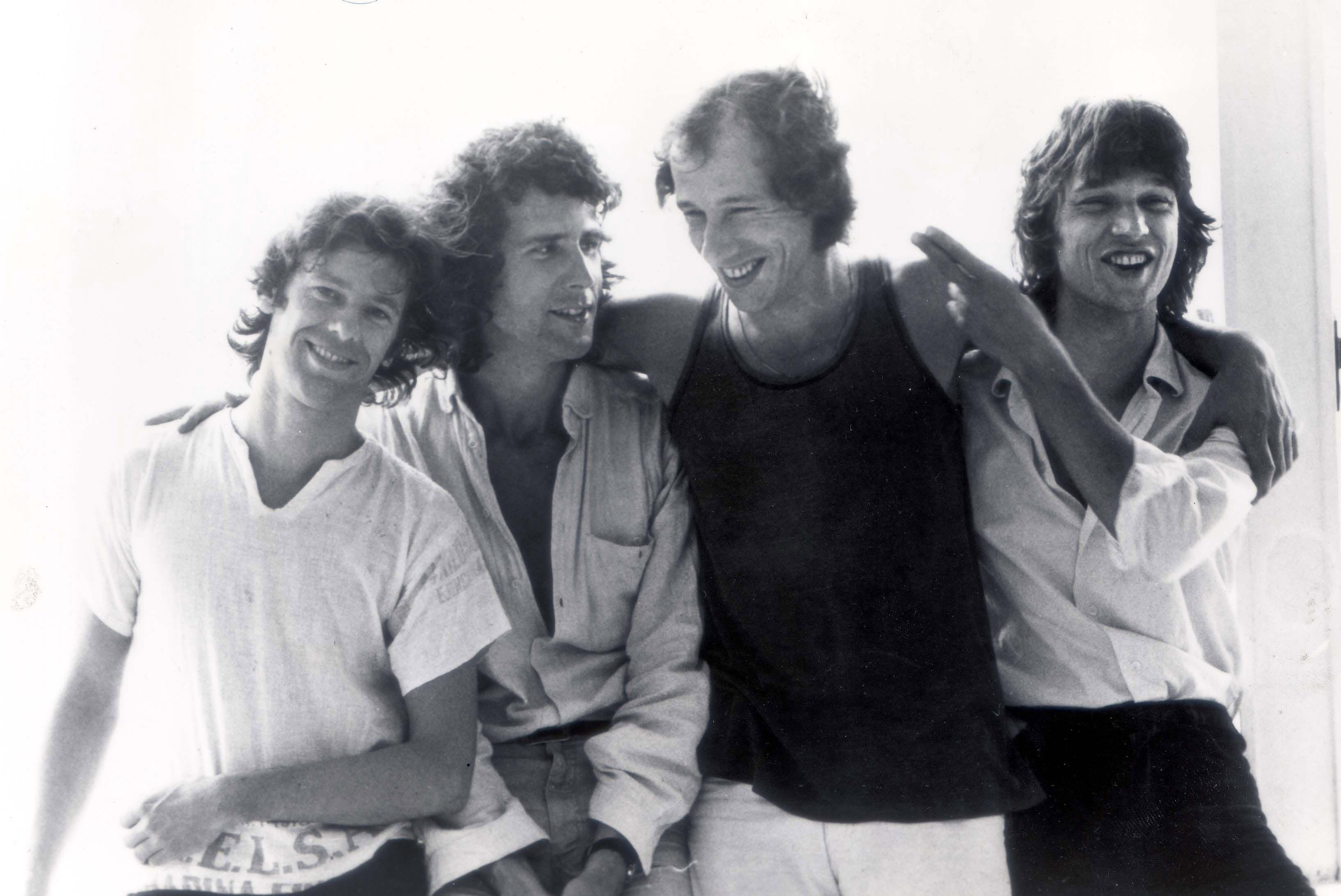
When the blow-up came it was swift and brutal. The brothers had an explosive argument and David Knopfler quit. He returned to the UK, where he would begin a solo career. Three years later his elder brother guested on his debut solo album, but the two of them were estranged.
“David’s going wasn’t nice but it was absolutely inevitable,” says Ed Bicknell, who says that same issue of control led to Pick Withers’s departure within two years. “Mark’s got a strong personality and he’s very determined, and quite ruthless. But you need to be ruthless if you’re going to climb the greasy pole, and democracy in groups never, ever works.”
With David Knopfler gone, the pace of recording picked up and Making Movies took shape. Iovine brought in Springsteen’s E Street Band pianist Roy Bittan, and his heart-stopping fills gave wings to another epic, Tunnel Of Love, on which Knopfler located the sweet spot between the E Street Band’s hulking engine and Dylan’s rolling thunder. Hearing the track come into being, says Bicknell, “it felt like a jet plane taking off”.
A glut of boldly ambitious records came out in 1980 – Springsteen’s The River, John Lennon’s Double Fantasy, Sandinista! by the Clash and Talking Heads’ Remain In Light to name but four. Making Movies stood at least shoulder to shoulder with each of them. Fired by the extra dimension Bittan brought into play, Knopfler subverted his guitar to the songs, and in doing so extracted from them greater heft and a new-found emotional resonance. Romeo And Juliet and Tunnel Of Love initially towered over the rest, but repeated listening revealed more jewels in Solid Rock, Espresso Love and the surging ballad Hand In Hand.
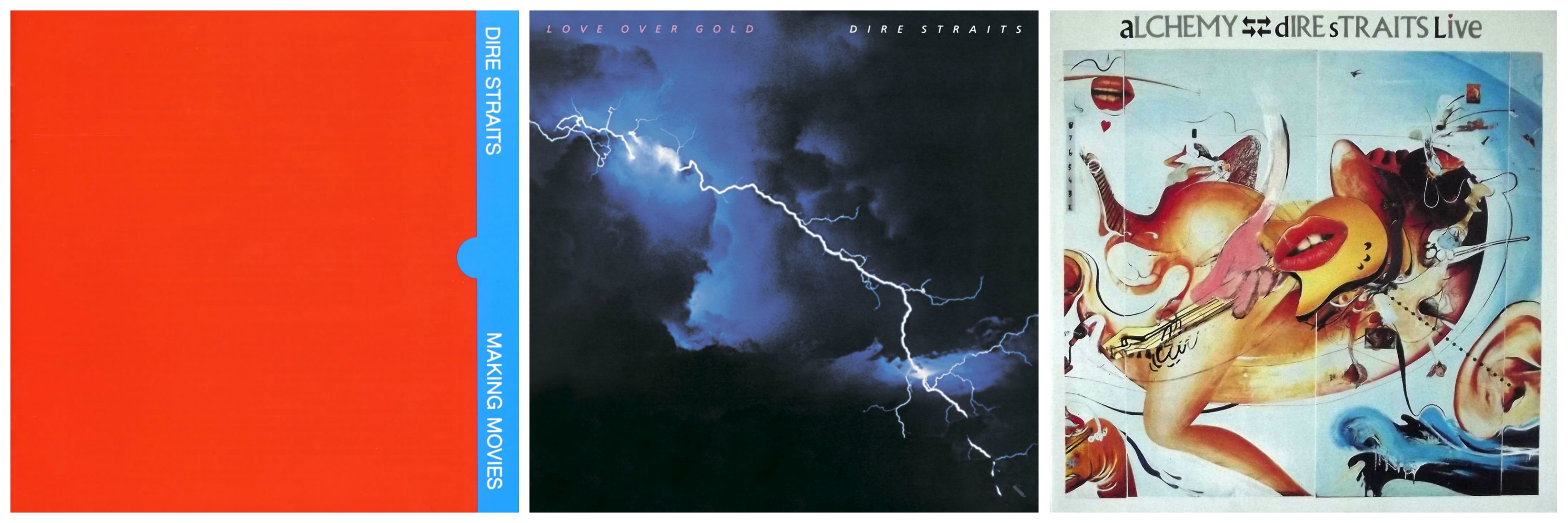
For the ensuing tour Knopfler brought in American guitarist Hal Lindes to fill his brother’s shoes and fellow Geordie Alan Clark on keyboards. Mick Jagger and Bob Dylan were among those turning out to pay their respects at one triumphal show at the Roxy on Los Angeles’ Sunset Strip.
As the 80s unwound Mark Knopfler was like a man released. He wrote a thoroughly fitting soundtrack for the bittersweet British film Local Hero, produced Dylan’s Infidels album and, in 1982, reconvened Dire Straits for the grandiose Love Over Gold. That album featured just five songs – all of them long and involved, and two of them stone-cold classics. Fifteen-minute opener Telegraph Road was pieced together during sound-checks on the Making Movies tour and unfolded like a literary novel, documenting America’s industrial revolution. Private Investigations was even more outlandish, a somnolent musical noir that Knopfler insisted be released unedited as a seven-minute single. Remarkably it reached No.2 in the UK.
Next up was the live double Alchemy, taped on the Love Over Gold tour and showcasing a band at the peak of its powers. Free from the confines of the studio, Dire Straits were able to stretch out and take flight, nowhere more so than on Sultans Of Swing and Telegraph Road. Both were longer and far more powerful than their studio counterparts.
Knopfler saw this as the end of an era for the band. “I’d like to try something else now,” he said at the time. “It could be acoustic guitar, or it could be all brass instruments, I really don’t know.”
Perhaps least of all he anticipated making one of the defining albums of the decade.
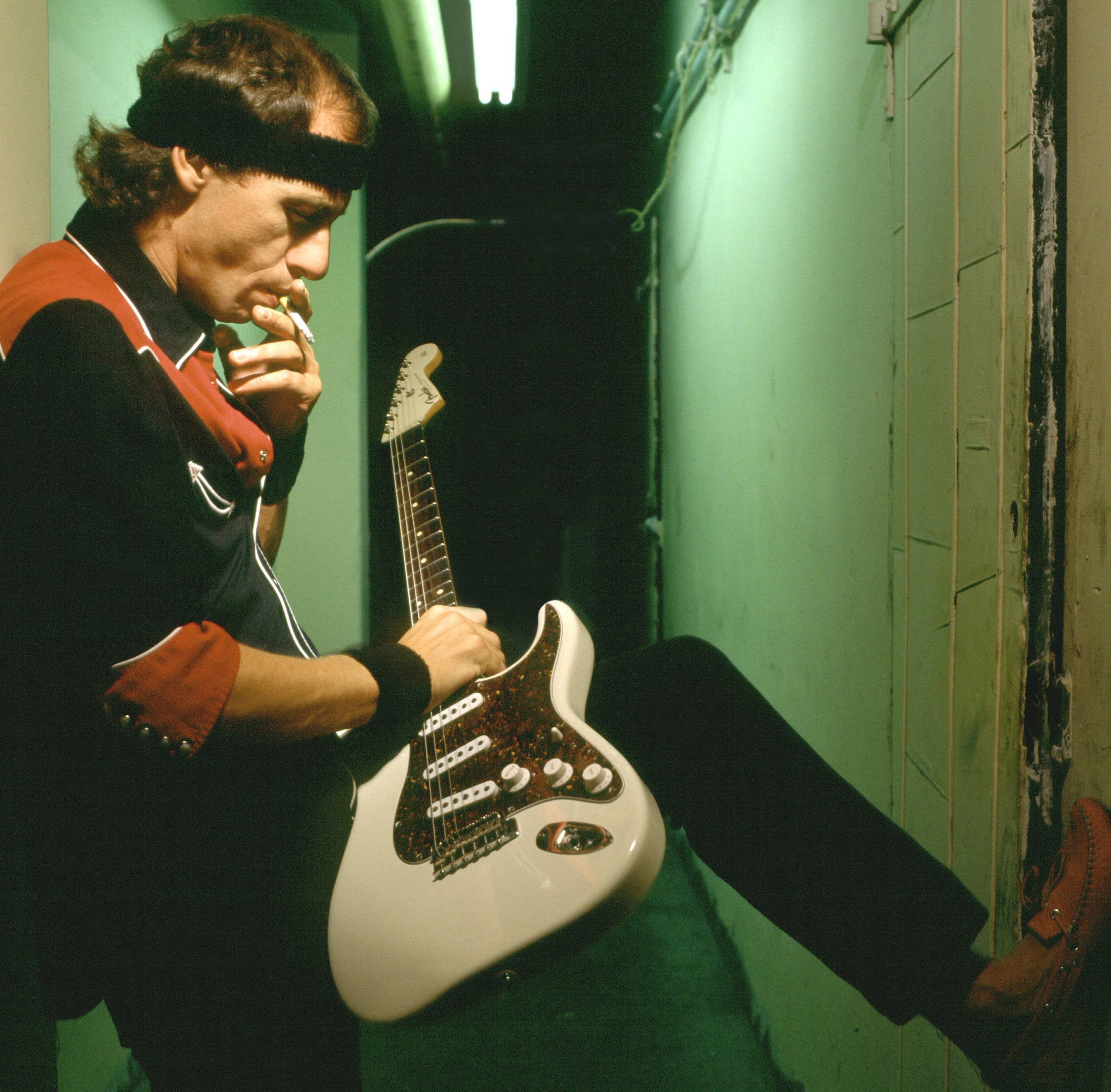
Towards the end of 1984 Knopfler assembled a new line-up of Dire Straits in London to rehearse their next record. He appeared more single-minded and attentive to detail than ever, rigorously putting the group through their paces for a month before whisking them off to Air Studios on the Caribbean island of Montserrat to cut Brothers In Arms.
Air Studios, later razed to the ground by a hurricane, was an idyllic location, and the tranquillity of island life seemed to relax Knopfler to his task. There was an ease to much of Brothers In Arms, as if the music had seeped from his fingertips unbidden. The mood of much of it was low-key and reflective, shifting from the late-night whispers of Why Worry and Your Latest Trick to the near-whispered title track. When it was roused, as on the crashing chords of The Man’s Too Strong, the effect was that much more magnified.
Yet one of Knopfler’s new songs immediately stood out from the rest. It began with a fuzzed guitar riff that Ed Bicknell suspects was inspired by ZZ Top, and proceeded to recount verbatim a rant at MTV that Knopfler had overheard a deliveryman making in an electrical goods store in New York. Sting added his distinctive vocals to the intro section of the track – singing the single sorrowful refrain: ‘I want my MTV.’
“Sting used to come to Montserrat to go windsurfing, and he came up for supper at the studio,” says John Illsley. “We played him Money For Nothing and he turned round and said: ‘You’ve done it this time, you bastards.’ Mark said if he thought it was so good why didn’t he go and add something to it. He did his bit there and then.”
Knopfler had another song, the gambolling boogie Walk Of Life, set aside as a B-side, until Ed Bicknell happened upon it while it was being mixed and persuaded him to include it on the album at the last minute. In the event it was an even bigger-selling single than Money For Nothing.
Upon its release, Brothers In Arms met with lukewarm reviews, but it arrived at precisely the right time. MTV was about to launch in the UK, and the music station leapt upon the animated promo for Money For Nothing, choosing it as the first video to be aired on the channel. The compact disc had also arrived, and Brothers In Arms’ exquisite production was tailor-made for the new format. The album sold more than a million copies on CD alone, taking Dire Straits to a new generation of consumers who saw music a status symbol. It took up a four-year residency in the UK chart and spent nine weeks at No.1 in the US, elevating Knopfler and his band to the top table of 80s megastardom alongside Springsteen, Prince, Michael Jackson and Madonna.
In its wake, Dire Straits set off on an 18-month world tour that took in 247 sold-out stadium and arena shows in 100 cities. By the end of it the endless attention and the sheer weight of numbers had lost all meaning for the band members, and for Mark Knopfler most of all.
“I would do a report for them every week which was then shoved under each of their hotel room doors,” says Ed Bicknell. “It would give world chart positions, and album and singles sales figures. I’m absolutely sure in my own mind that Mark would take his copy and put it straight in the bin.”
After Brothers In Arms Knopfler retreated from the spotlight for the best part of five years, but was eventually tempted back. In 1991 he gathered Dire Straits once more, for the On Every Street album. It sounded worn and tired, but still racked up 10 million sales. They embarked on another mammoth tour on the back of it, playing close to 300 shows in two years. It was a vast undertaking and also a ruinous one. Knopfler’s second marriage disintegrated, and he recoiled from the dehumanising nature of existing on such a grand scale. It was all over after that last gig in Zaragoza, but he formally laid the band to rest in 1996 and has barely spoken of them since.
“The last tour was utter misery,” says Ed Bicknell. “Whatever the zeitgeist was that we had been part of, it had passed.”
“Mark and I agreed that was enough,” recalls John Illsey. “Personal relationships were in trouble and it put a terrible strain on everybody emotionally and physically. We were changed by it. Neither of us wants to go back to those days. Mark described it to me just the other day as being too much ‘white light’ – too much in the spotlight, and he was never very comfortable with that.”
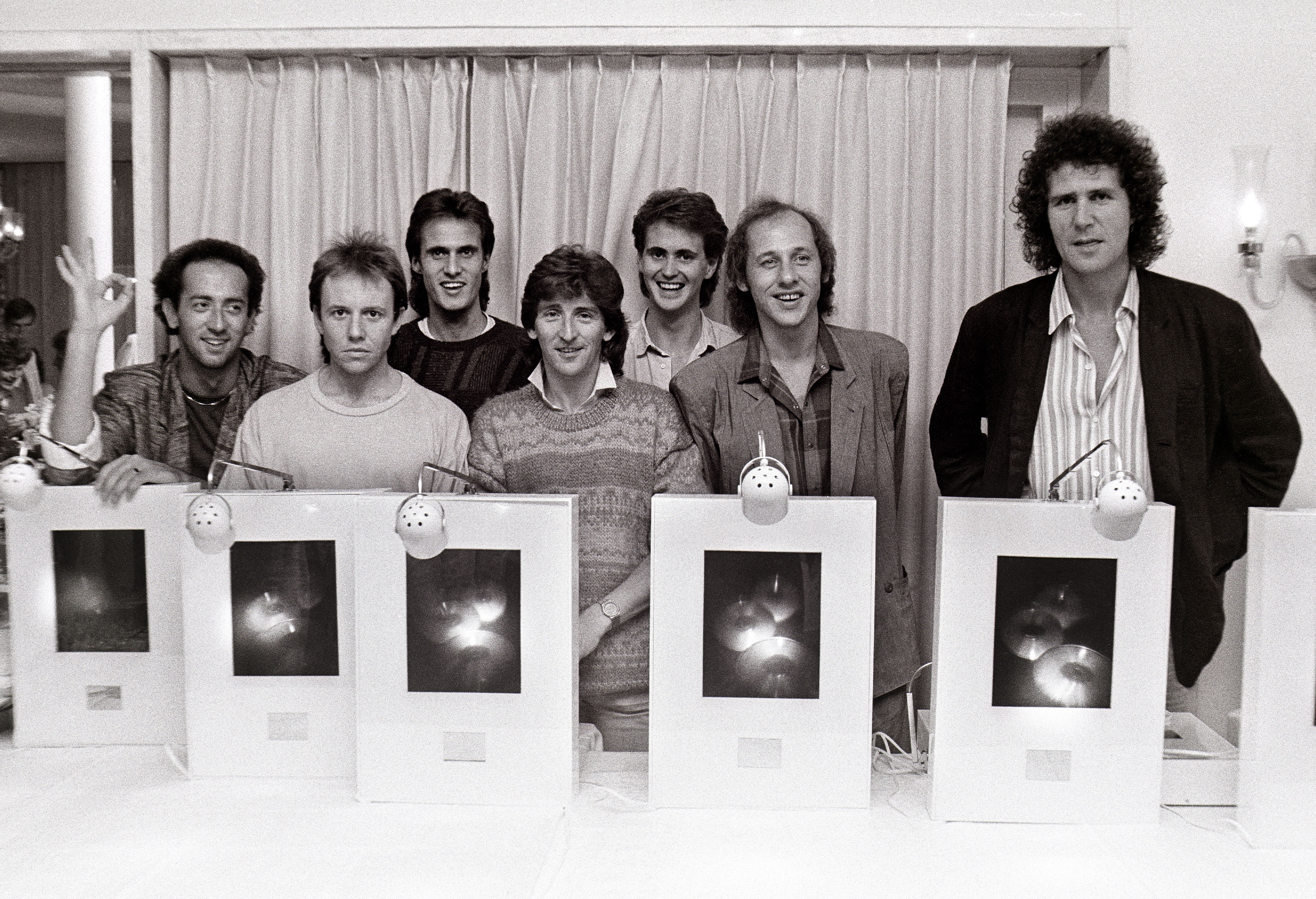
With the band laid to rest, John Illsley settled down to indulge his love of painting and is currently preparing an exhibition of his work in London. He also continues to record and tour with his own band. Ed Bicknell managed Mark Knopfler for several years after the split but has now retired.
Having run his race with Dire Straits, Knopfler has since contented himself in a quieter, more comfortable niche – composing soundtracks, collaborating with the likes of Chet Atkins and Emmylou Harris, and making a succession of roots-based solo albums, of which the latest, and possibly best, is this year’s Tracker. He was married for the third time, to actress Kitty Aldridge in 1997, and continues to indulge his lifelong passion for motorbikes and collecting classic cars. He and his brother are still not speaking.
“I spent a lot of time doing therapy and dealing with my issues and ghosts and demons,” says David Knopfler. “Maybe Mark has too. I don’t know what he does. Of course, it casts a huge shadow on both our lives and on our families. We’ve got cousins who don’t know each other.”
Ed Bicknell says that people ask him regularly when Dire Straits are going to get back together. His answer remains the same.
“I tell them the same thing: why would they? None of them needs the money. Peter Grant once said to me: ‘When you’ve had an experience like I had with Led Zeppelin and you had with Dire Straits, there is no point trying to reproduce it.’ And he was exactly right. That was the one.”
